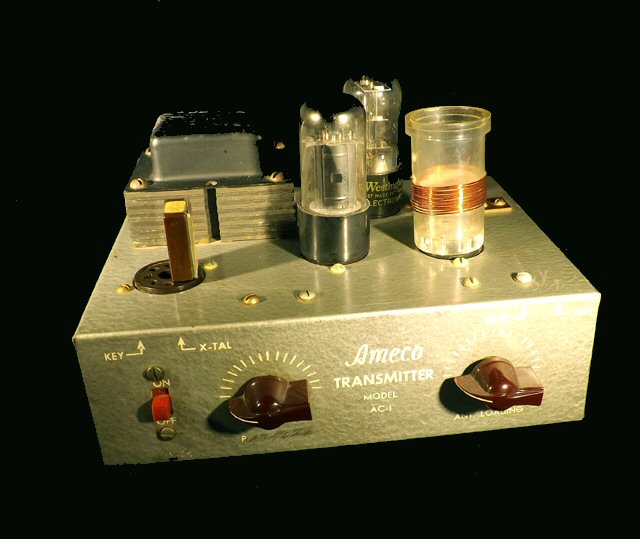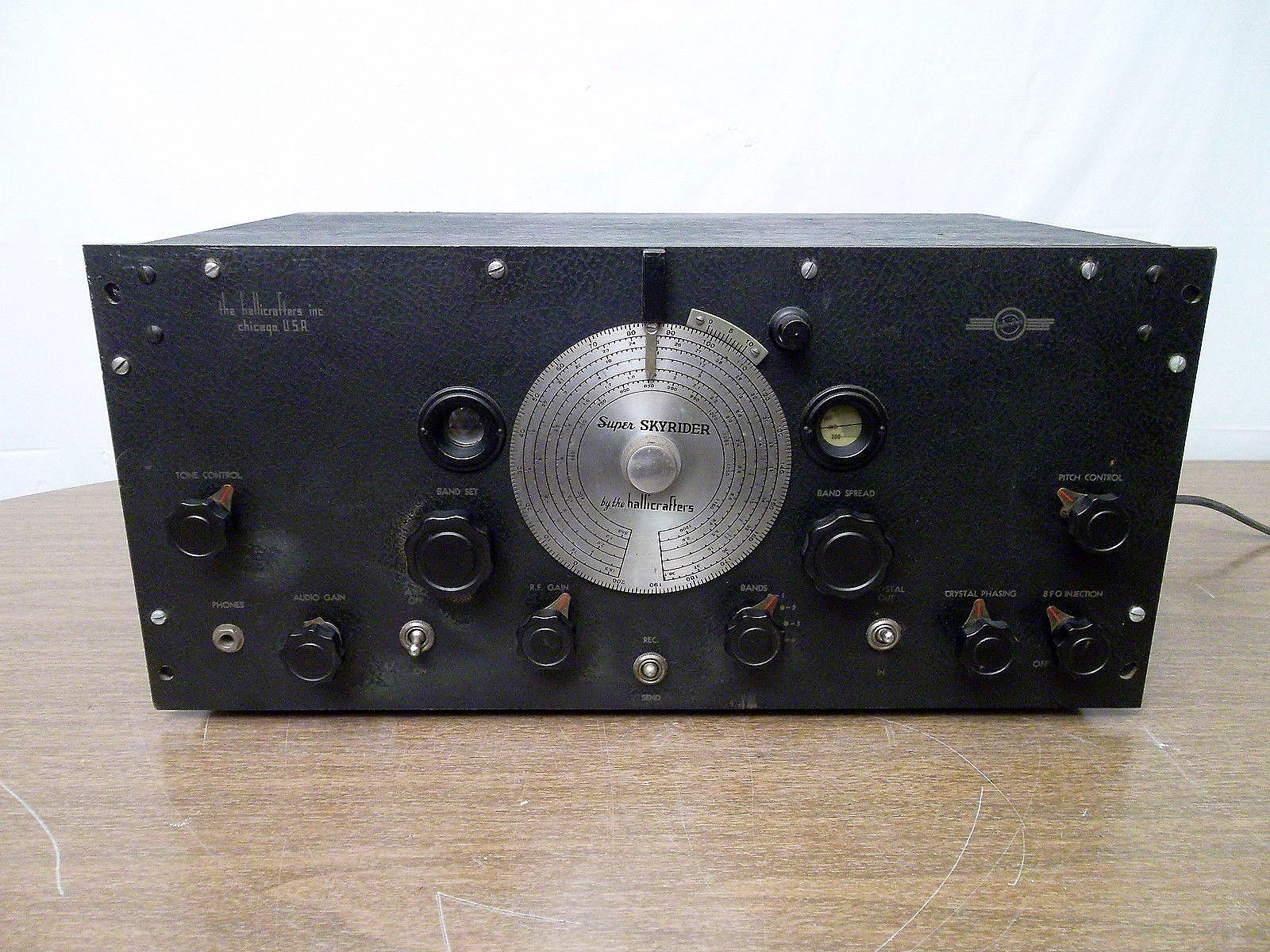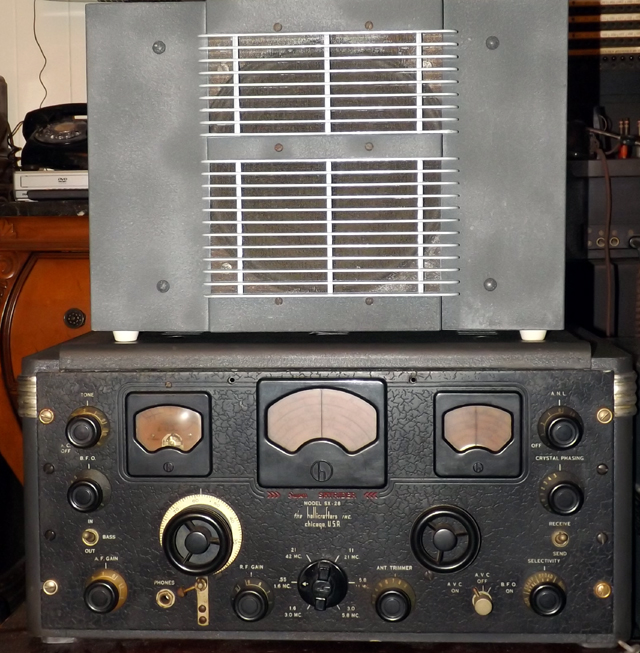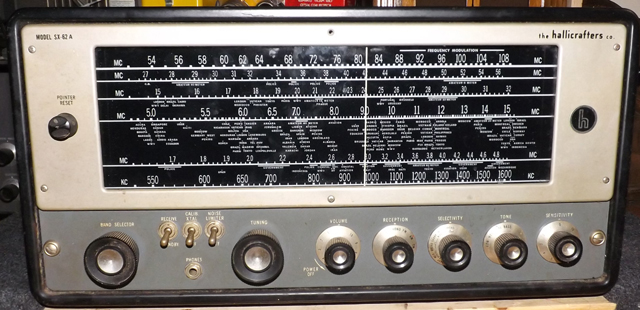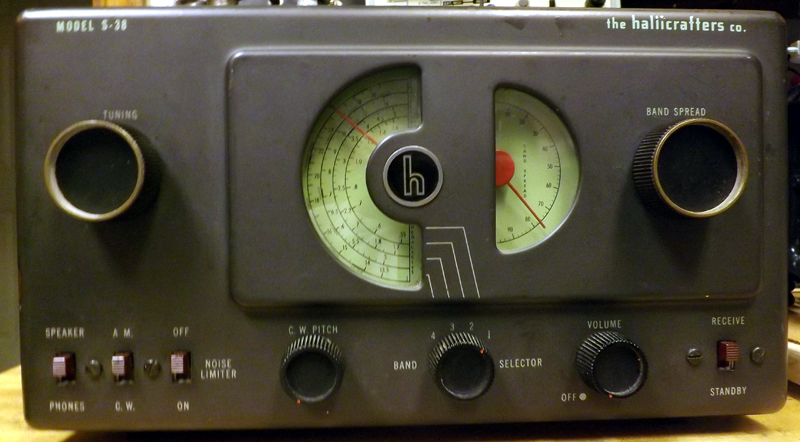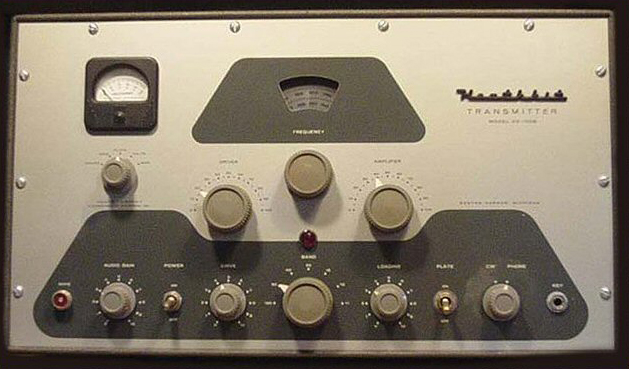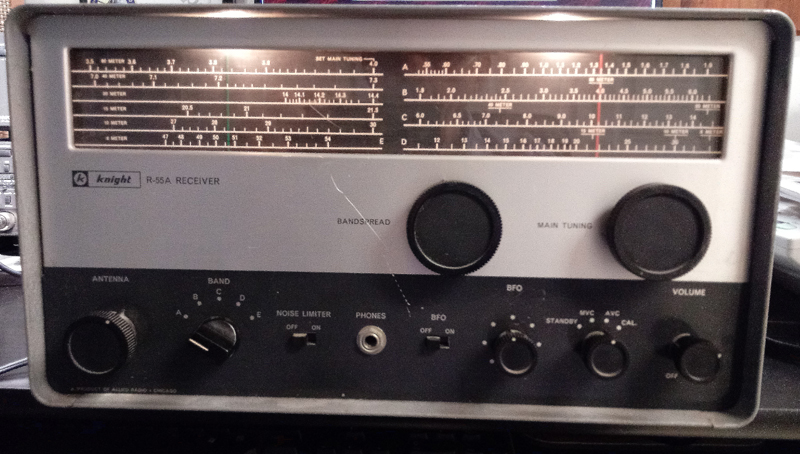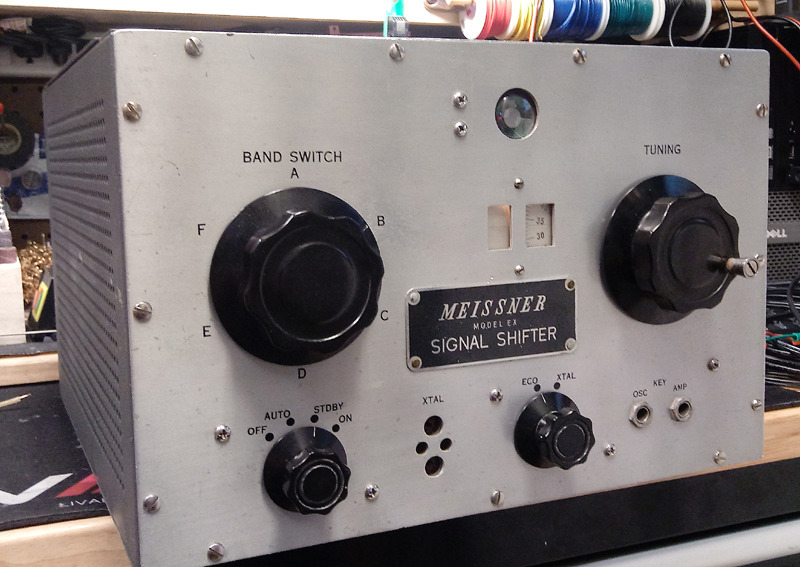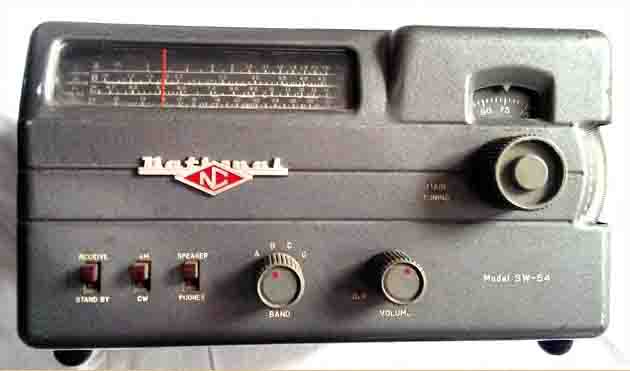 |
Radio Related Links |
| MUSEUM OF YESTERDAY |



The American Radio Relay League was established, under the early leadership of Hiram Percy Maxim and Clarence Tuska, as a fraternity of amateur radio operators who would adhere to common sense standards of operation in the early days of 20th Century experimental radio. A century later, the League has grown to membership approaching three-hundred-thousand members, and it remains a strong and viable organization for the protection and advancement of Ham Radio training, legal intervention, and support of licensed amateur radio "ham" operators.
The League's magazines and educational publications have documented the development of radio over the course of more than a Century, and it has managed to work with the FCC over the years to protect the rights of Ham Radio Operators and the frequencies allocated for the hobby.
John DeMajo and The Museum of Yesterday are proud of our ARRL Life Member status which dates back to 1960 when our founder Mr. DeMajo, as a young teenager, joined the League upon receiving his first FCC radio operator's license. The photo below shows our founder and chairman, who now holds the highest classification ham radio license (Extra Class), and certifications as an ARRL license instructor and volunteer license examiner, at the controls of the Hiram Percy Maxim Memorial Radio Station "W1AW" at ARRL headquarters in Newington, Connecticut. It was taken during the 2014 celebration of the 55th anniversary of the issuance of Mr. DeMajo's radio call sign K5HTZ. .



A close-up view of the K5HTZ Radio Ham Shack located in the basement "bunker" at the Museum Of Yesterday. The station's proven range extends out all over the world, with contacts having been made in countries over seven-thousand miles away. To date, our official Log Book Of The World station log indicates confirmation of contacts in forty-nine states and ninety-seven foreign countries. Our contacts are electronically confirmed by both Logbook Of The World and QRZ.com. The K5HTZ transmitters can deliver the legal limit of power, as permitted by the FCC, to the antenna systen. Antennas in use include a center loaded dipole and an MFJ vertical. The main SSB exciter / receiver is a Kenwood TS-440S, which drives a 1200 watt Dentron amplifier. You can see a report from ARRL's Log Book Of The World, displaying our ten most recent contacts, by clicking this icon.


The museum's tube based, 100% duty cycle, grounded grid RF linear amplifier
In the case of an Electro-Magnetic Pulse (EMP) event that could destroy the power grid as well as most modern solid state radios and electronic devices, the museum has the ability to operate a number of vintage tube based transmitters and receivers from our collection. In order to handle the 100% duty cycle requirements of these old AM transmitters, it was necessary to acquire an RF amplifier of similar design to what would have been used by ham operators in the pre-single sideband era. This 1000 watt amplifier was designed and constructed in the museum's restoration facility. It is built from recycled components, many of which date back to the 1950s, but was only recently designed and assembled by our staff.


The device shown above is the dreaded "Wouff-Hong."
This example was an award bestowed at the 1938 ARRL convention. It was recently acquired by The Museum Of Yesterday.
The story of the "Wouff-Hong"
Amateur radio, while under the control of the Federal Communications Commission today, has always been to some extent a "self policed" hobby. Conscientious amateur radio operators pride themselves on operating stations that are clean, safe, well regulated, and which adhere to the law. In the case of those rare operators and hacks who do not adhere to the standards, they are usually called down by their licensed peers even before they come to the attention of the Federal regulators. The FCC imposes stiff fines on wayward members of the amateur radio service, just as it does for those licensees in the commercial broadcast industry.
In the early days of Radio, the radio spectrum had become a playground for experimenters who were operating all manner of spark transmitters and other unregulated radio devices that often impeded critical communications between ships at sea and other public safety and broadcast efforts. Since the government had not yet become the official regulator of the radio spectrum, amateurs, particularly those who subscribed to the standards of the American Radio Relay League, felt that there was a need to present a fictitious symbol of an instrument of punishment for those early hams who didn't operate courteously or in conformance with the law. Out of this early period evolved the instrument of torture known as the "Wouff-Hong." It is believed that league founder Hiram Percy Maxim (pictured above) offered the Wouff-Hong as that very symbol in 1919. That year, Maxim wrote an article in QST magazine, the official journal of the ARRL, in which he offered the Hong as a representation of the spirit of self-policing of the radio bands. Today, the Secret Society of the Wouff-Hong convenes annually at ARRL conventions, and the original Wouff-Hong, presented to the league by Maxim in 1919, hangs in the office of the League's secretary in the Newington, CT. headquarters of the organization.
The manner in which the Hong was to be applied to wayward ham radio operators was never really openly discussed, however in viewing it, it is not hard to imagine how those early wireless operators envisioned it's application. The "Wouff-Hong" shown above, which was presented at the 1938 ARRL Convention, now stands guard over the amateur radio service at the Museum Of Yesterday's communications history collection.
BEFORE THE DAYS OF "NO CODE" AMATEUR RADIO LICENSES
Prior to the latter fifth of the 20th Century, obtaining an amateur radio license required the applicant to be proficient in the International Telegraph Code, which was commonly referred to as "Morse Code." The speed requirements and proficiency of the operator depended on the grade of license for which the applicant was testing, and minimum accurate copy speeds ranged from 5 to 23 words-per-minute. Most license tests were given by FCC field engineers at local FCC offices. Many of us older hams remember getting up early in the morning and traveling to the nearest FCC field office where we sweated out these code tests.
The license preparation for aspiring hams usually involved individual or group practice of sending and receiving code. The same procedure applied to operators in the military or shipboard radio services. In the next few photos, you will see some of the simple tube type code practice oscillators that were used by most people in learning and practicing the code. Bud, T. A. McElroy, TAC, AMECO and others were among the brands commonly found in radio schools and ham shacks across the nation. This section of our site pays homage to the lowly code practice oscillator.
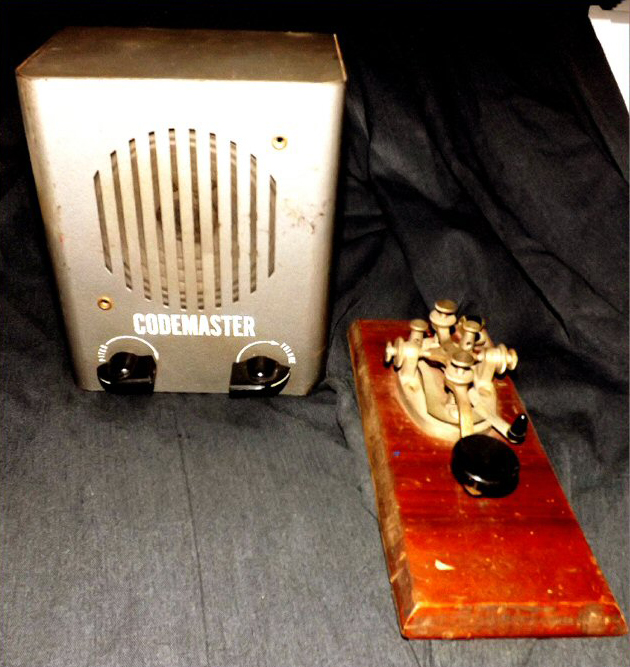
A personal recollection from museum founder and chairman John DeMajo:
The code practice oscillator is certainly no stranger. I was barely learning the letters of the alphabet when my uncle, who was a ham operator, began to teach me the radio-telegraph code, often referred to as Morse Code. We would sit across the table and he would send me simple stories and messages in code, that I would have to decipher. Later, when I was a freshman in high school, the ham radio club would meet at 7 P.M. each Monday evening in the school library, and again we would employ an oscillator like the one shown above, to teach and learn code with the hope that this extracurricular activity would enable members to sit for an FCC license test. These simple sound generating devices also doubled as signal monitors to allow us to hear our own sending when using an actual transmitter. Whether it was individual code practice at home, ham radio clubs, or military training, just about every CW radio operator owes some portion of his skills to these simple code tone generating devices.
As modern technology eliminated the need for CW or code based radio transmissions, for all but the most die-hard hams who still like to operate in the CW mode for sport, the code requirements were dropped from most amateur radio license classes. Similarly, ship-to-shore code stations began to be phased out, and most vessels today rely on satellite communications when at sea.




By today's standards, the original cost of 9.00 would not even have covered one-third of the shipping costs for the unit that the museum has recently acquired.


THE HISTORY OF THE "AMATEUR RADIO CALLBOOK"
Beginning in the early 1900s, lists of amateur radio operators were published on a somewhat regular basis. These indexes of licensed radio operators and their call signs, served as verification and location of stations. In the very early years, the "Blue Book" of licensed operators was the official publication. Beginning around 1919, the U.S. Commerce Department began to publish annual lists of amateur stations. Within a few years, a publication was established under the name "AMATEUR RADIO CALLBOOK MAGAZINE". These call books remained as the standard listing until the advent of the Internet at which time the FCC began operating their own on-line database. Today, organizations such as QRZ, the ARRL, and other Ham support groups have made the FCC data available on their web sites as well. For a history and examples of the "Blue Book" and the "Amateur Radio Call book," click this link
| Click Here |
Thoughts From Our Founder:
In the middle years of the 20th Century, there were no computers, cell phones or video games. Entertainment for young inquisitive minds was limited to radio and later TV, with shows such as "Watch Mr. Wizard," and young electronics enthusiasts turned to Ham Radio as a popular hobby that permitted the expression of electronics competency. Of course things were simpler then from a technical and financial standpoint. Single Sideband, Packet, FM and UHF were just things being talked about. For the average young ham of the 1950s, it was CW in the form of home made transmitters that usually were born from the remnants of old converted receivers, audio equipment, surplus WW-II military gear, and also from scavenged television parts.
In those days, thoughtful and community supportive owners of the "mom and pop" radio repair shops that were still in abundance, often saved old sets and parts which they gladly offered to aspiring amateur radio operators. Many of today's seasoned Hams, got their start with home-made transmitters that used tubes such as 6L6, 807s and old television sweep amplifier tubes. Much of the rewards of the hobby came with the satisfaction of building one's own "rig" and getting on the air thanks to one's own ingenuity.
Today, Ham radio equipment has become much more complex, and many of today's Hams are on a technical level equating to a university trained electronics engineer or professional technician. On the other hand, many Hams are again discovering that same DIY satisfaction through kit built radios, devices such as the Raspberry Pi, and construction of projects featured in present day magazines and web sites.
It is important to be aware that many of today's electronic conveniences began as experiments in the realm of Ham radio. The spirit of ham radio is still very much alive, and this very rewarding hobby is something that today's youth should have an opportunity to rediscover.
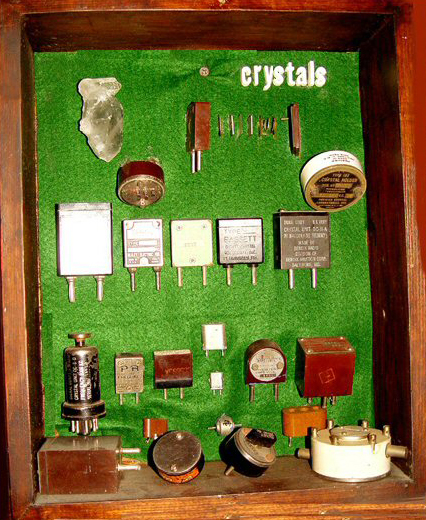
"Rock Bound"
Examples of amateur radio, commercial broadcast, and industrial crystals
 |
Prior to the digital age, commercial radio stations, and many amateur radio stations, used quartz crystals as a means of frequency control. The crystal, when cut and ground to size, oscillated at a designed frequency with exceptional stability, especially when temperature remained constant. Many commercial non-broadcast applications also used crystals to produce RF for process purposes such as RF powered ovens in factories. Amateur operators in the "novice" class were restricted to the use of crystal frequency control. This limitation was an incentive for the operator to upgrade to the "General" class license which permitted the use of variable frequency control. A "rock bound" amateur had to possess a crystal for each frequency on which operation was desired, which even at 1950s prices, could get fairly expensive. HOW A CRYSTAL OSCILLATOR WORKS A crystal oscillator is an electronic oscillator circuit that uses a piezoelectric resonator, a crystal, as its frequency-determining element. Crystal is the common term used in electronics for the frequency-determining component, a wafer of quartz crystal or ceramic with electrodes connected to it. A more accurate term for it is piezoelectric resonator. Crystals are also used in other types of electronic circuits, such as crystal filters. (Wikipedia)
Above: The inside of a typical modern Quartz crystal. A quartz plate, specially ground to oscillate at a specific frequency, is sandwiched between two plates of conductive metal. As current is applied from the oscillator circuit, the crystal's oscillations govern the flow of electrons, thereby producing RF energy at the desired frequency, or else acting to filter RF signals which are different from the crystal's resonant frequency. The crystal tray below illustrates one ham's novel way of keeping his crystals readily accessible. |


 |
Despite the fact that there are more than 800,000 licensed Ham radio operators in the world today, the origin of the term "HAM," as a metaphor for Amateur Radio Operator, is not that well known. While many claim to have "debunked" this explanation, it would seem as good an answer as any as to where the term "HAM" originated. As the story goes, group of three radio experimenters and engineering students had formed an early club known as Harvard Radio Club. At the time, radio was in its infancy, and radio station call letters were usually self-assigned by the owner of the particular station. In the case of the Harvard students, whose names were ALBERT S. HYMAN, BOB ALMY and POOGIE MURRAY, they decided to call their station "HYMAN-ALMY-MURRAY". Shortly thereafter, stations began using letters or numbers as a way of shortening the call signs. It is said that the men decided to change their call letters to "HAM." For whatever reason, their call letters became synonymous with amateur radio, and the term remains today. |
In the early 20th century, the main source for the parts used by radio experimenters, was supply houses that sold electrical wiring devices. By the mid 1920s. a few companies were founded specifically for the sale of radio devices. Among these were names such as William Duck Company, Robertson-Cataract, and others. By 1930, radio had become so popular that new mail order companies began to feature ham equipment as well as home radios, phonographs and such. The names Allied Radio, Olson, Lafayette and others became major sources for all kinds of electronics devices and parts. One of these original companies that managed to stay around into the 21st. Century, was Radio Shack, which was based in Boston. The 1940 mail order catalog from Radio Shack featured ham radio equipment to the degree that the cover of the catalog that year was an illustration of a ham operator's "shack" with all of what would have been the latest equipment. The Museum Of Yesterday has created an exhibit which brings that illustration to life, with a selection of actual antique equipment like that featured on the 1940 cover illustration. Below is the a copy of original catalog cover, alongside a live versio of the famous scene. It is a featured exhibit in the museum's "Old Iron" gallery.
 |
 |






Note the use of Nuvistor tubes. The Nuvistor, introduced in the early 1960s and intended for high frequency RF applications, was the final technological development in progression of the tube applications, occurring just prior to the end of the vacuum tube era.
(Manufacturer's manual or additional technical information is available on this item. Click image above to access.)
While Ameco's products enjoyed a respectable share of market acceptance, mainly because of their reasonable price tags and build-it-yourself kit inducement, none of their other products have realized the present day nostalgic popularity of their AC-1 Novice Transmitter Kit (shown above).
Far from the value of its 1950s price tag of $15, today almost impossible to find original condition AT-1 transmitters are drawing prices in excess of $300. A "bare bones" rig for budget strapped Novice class operators of that post-war era, the AC-1 was highly advertised in radio magazines. Because of the apparent successful sales and nostalgic significance to today's "baby boomer" hams, remaining AC-1s are highly sought after and at disproportionate costs whenever they do become available.
Currently, there are quite a few articles and You Tube videos available highlighting this simple little transmitter. We have provided a link below to one such video (by Bonnie Ramirez), and you can see the schematic and technical information by clicking the photo above.
| PLAY VIDEO |

The museum's restored AMECO AC-1 CW transmitter powering up into a 7.5 watt dummy load on 40 meters.
In some of the Andy Griffith TV shows from the 1960s, an Ameco TX-62 can be seen on the table behind Andy's sheriff desk.
(Manufacturer's manual or additional technical information is available on this item. Click image above to access.)

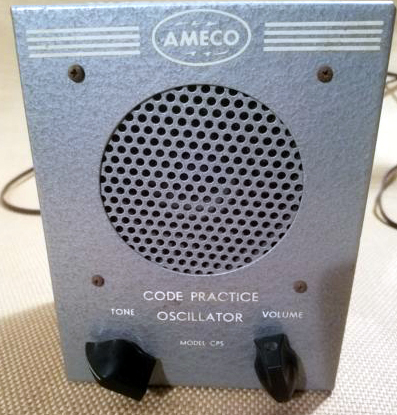


 |
ARTHUR A COLLINS, Founder of the Collins Radio Companyy The Collins company gained recognition as the manufacturer of top-of-the-line amateur and commercial receivers, transmitters and station accessories. While the original company has changed hands over the years, and is no longer producing radios for the Amateur market, vintage Collins equipment is in high demand, and commands extraordinary prices on the vintage electronics market. The museum has been fortunate in having been able to acquire this fine example Collins receiver. |



The Gonset Communicator was a series of vacuum tube VHF AM radio transceivers that were widely sold in the 1950s and early 60s. They were designed by Faust Gonset and manufactured by the Gonset Division of L. A. Young Spring and Wire Corp. Models were built for amateur radio, aircraft radio and U.S. Civil Defense use. The Gonsets were among the first commercial radios available for the post-World War II amateur bands and helped popularize VHF for amateurs.
The Gonset Communicators were packaged in a square box with a carrying handle and a UHF connector for the antenna on top, making them quite portable. Early models had a magic eye tube tuning indicator in front. The configuration earned them the name "Gooney Box." The radios could operate from 110 volt AC mains, or 6 or 12 volt DC from a car battery. A simple whip antenna could be plugged into the antenna connector on top. The transmit/receive switch was on the front panel, not the microphone. The Gonset could also be connected to an external speaker and used as a public address (PA) system.
The Gonset's receiver was manually tuned over the unit's frequency range with an analog dial, while the transmitter frequency was controlled by a crystal oscillator. The original model had a single jack on the front panel for an FT-243 style crystal. A chain of frequency multipliers allowed crystals in the 8 MHz range to be used. Many such crystals were available as military surplus in the 1950s. Later models had jacks for four crystals with a switch to select which one to use. Models were available for the 6 meter and 2 meter amateur bands, as well for as the VHF aircraft air band where they were often used as ground stations at smaller airfields. The civil defense model was painted yellow with CD insignia, and was available for the 6 and 2 meter bands. The 2 meter model was also used for the Civil Air Patrol, and could cover CAP frequencies which were adjacent to the 2 meter amateur band.
The first model, introduced in the November 1952 QST Magazine, sold for $189.90. The model II, introduced in 1954 cost $230. It added the bank of transmit crystals and included knobs for the transmitter tuning controls, which required a screwdriver in the original. The model III was white and had a meter instead of the magic eye. The model IV switched to a lower profile package.
(Cited from Wikipedia)
Below: Original Gonset model shown beside a Model II version of the popular 1950s two meter transceiver.



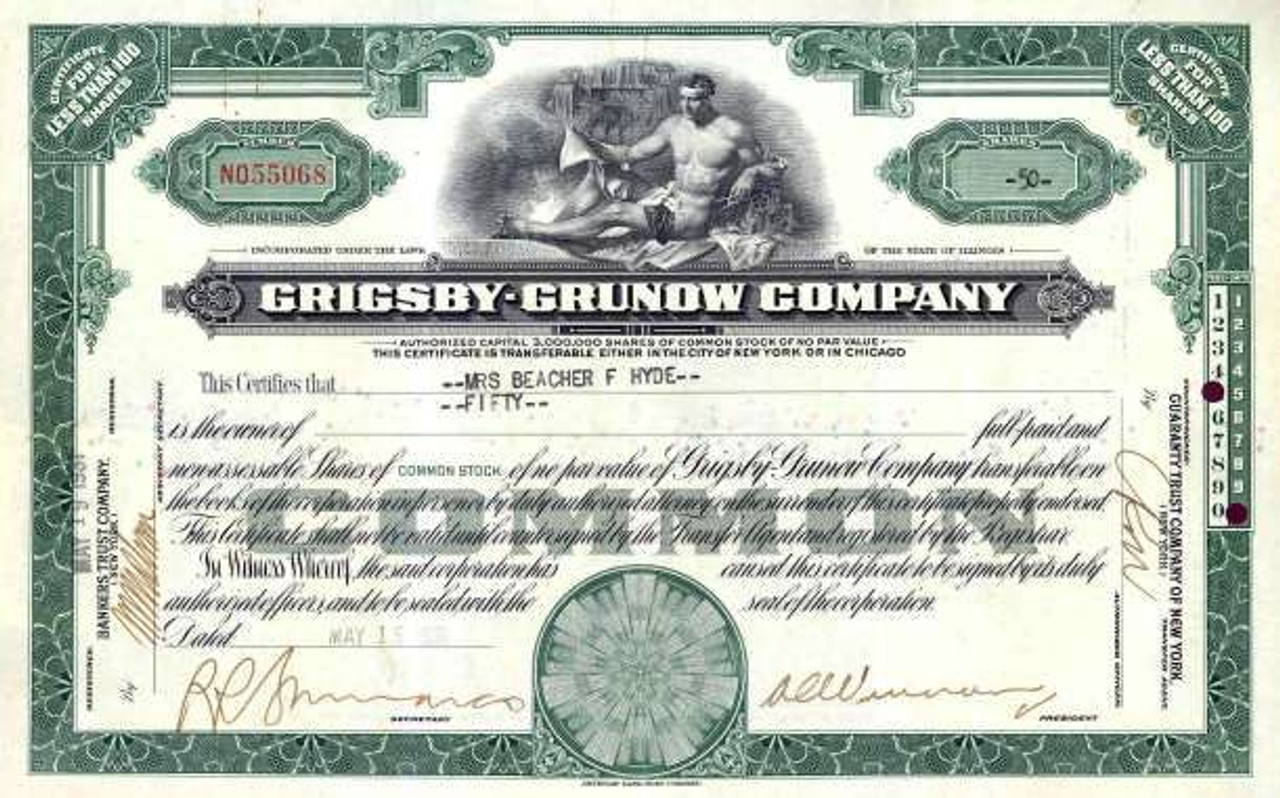
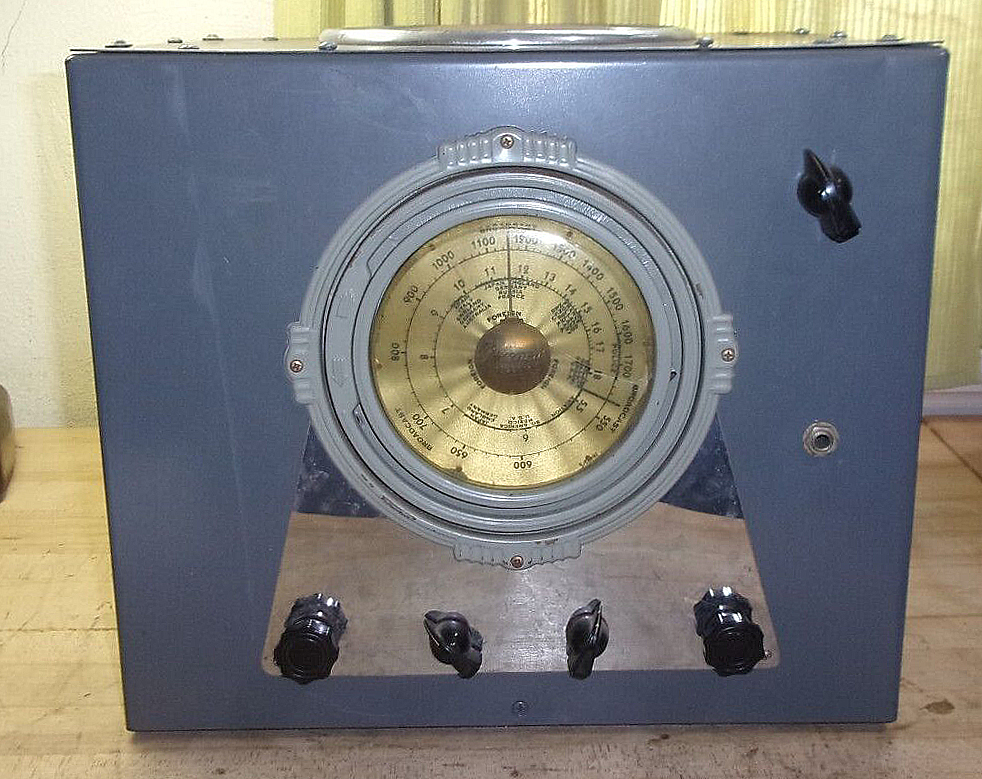 |
 |

"The Radio Man's Radio"
The Echophone EC-1, popular during World War II as "The GI's Radio."
Hallicrafters purchased Echophone Co. in the 1930s in order to obtain Echophone's RCA manufacturing license. Although the EC-1 series was manufactured during the manufacturing blackout that resulted from World War II, Hallicrafters was able to build and sell these radios, with the understanding that they would only be delivered to active military service persons in order to improve morale among our service men and women on the war front. For that reason, Hallicrafters elected to resurrect the Echophone name despite the fact that they had been manufacturing their products under the Hallicrafters banner for several years preceding the war.
(Manufacturer's manual or additional technical information is available on this item. Click image above to access.)


"At the beginning and the end"
Hallicrafters S-19 "Sky Buddy" was one of the first in a line of hobbyist communications receivers made by the Hallicrafters Company of Chicago, IL. Through most of the Hallicrafters' production, models designated as SX- were high end commercial receivers, often used by police, public service entities, and serious ham radio operators. whereas the S- series was a lower priced version of the same basic design that was intended for short wave listener and hobby use.
(Manufacturer's manual or additional technical information is available on this item. Click image above to access.)
In contrast, at the end of their realm as one of America's top four recevier manufacturers, Hallicrafters released a nostalgic version of the Sky Buddy for a new generation of hobbyists in the 1960s. The Sky Buddy II, also known as the model S-119, like it's 1930s namesake, was a basic multi-band superhet designed around tubes of that era. Because the S-119 is a "baby boomer" nostalgia radio for many, the prices of recently available sets on the antique market are drastically out of proportion with radios from the period.


(Owner's Manual is available..Click above image to view)
Introduced in 1939, this is a unique Hallicrafters design featuring an Art Deco look which had become popular in the era prior to WW-II. Considered a "high end" product in its day, the RF section uses individually tuned ceramic capacitors, which presents a time consuming alignment process. The set has eleven tubes, and covers 170KHz to 35MHz in four bands. It is also the first Hallicrafters receiver produced with a calibrated band spread.
(Manufacturer's manual or additional technical information is available on this item. Click image above to access.)
(Manufacturer's manual or additional technical information is available on this item. Click image above to access.)


Hallicrafters produced a massive amount of advertising material intended to enhance the experience of operating their products. One such example is this short wave listening calculator designed to assist users in determining the best listening times for specific international broadcasts.


As sales began to dwindle in the 1960s. mainly due to competition from kit radios and a number of foreign manufacturers entering the market, Hallicrafters produced a 45 RPM phonograph record, featuring narration by popular newscaster of the day Alex Drieir, which was intended to demonstrate the "thrills" that could be experienced by owning a Hallicrafters short wave radio. A rare copy of this recording exists in the Muerum Of Yesterday library.
Although Halligan's company had distinguished itself even before the United States became involved in World War II, the Hallicrafters name became synonymous with communications radio, during the War, mainly because of the Military-Industrial cooperation that developed the late 1930s. One such cooperative project, which involved a group of ham radio operators, Hallicrafters company engineers, and military officials, took the company's highly successful HT-4 ham transmitter, and modified it for rugged service required for use in the European theater of WW-II. The truck-mounted BC-610 communications van, as it became known, was the Army's single most durable radio transmitter of the era.
The military version of the Hallicrafters HT-4, carrying the military designation of BC-610. (click photo for service info)
You are welcome to download this rare vintage WW-II era film featuring the manufacture of Hallicrafters' equipment including the BC-610.
MAKING HALLICRAFTER'S RADIOS FOR THE WAR ![]()

The Hallicrafters SX-42 receiver was the post-war top-of-the-line from the Hallicrafters Company of Chicago.
(Manufacturer's manual or additional technical information is available on this item. Click image above to access.)

(Manufacturer's manual or additional technical information is available on this item. Click image above to access.)

(Manufacturer's manual or additional technical information is available on this item. Click image above to access.)


The Hallicrafters Model S-40B was an improved version of the S-40A receiver was patterned after the high end SX-42, but with a substantially lower price tag.
Throughout the entire manufacturing run of Hallicrafters' communications equipment, the "SX" series indicated the top-of-the line offerings, while the "S" series was a more budget conscious SWL grade radio. The Hallicrafters Company also built a line of transmitters for amateur, commercial and marine use. The company's transmitter line carried the model designations beginning with the letters"HT."
(Manufacturer's manual or additional technical information is available on this item. Click image above to access.)
The Hallicrafters SX-140 was one of the later receivers manufactured just prior to the demise of the company. It was a ham band exclusive receiver with more modern styling that was competitive with the later sets made by National Radio Company, Heathkit and Allied Radio, three of Hallicrafters' biggest competitors in the early 1960s. Interestingly enough, this set was also offered in kit form using the name HALLI-KITS. This was an unprecedented move by Halligan's company, and it serves as evidence that the Hallicrafters Company was being forced to respond to heavy competition from Heathkit and Allied Radio. A few years later, in 1966, the Halligan family sold the company, which had by then become mainly a subcontractor to Chicago Musical Instruments in the manufacture of Lowrey electronic organs. Under the new ownership following the 1966 exit of Halligan, radio manufacturing ceased and the Hallicrafters name became just another piece of communications history. (Note that by clicking the photo above, you can see the original manual and kit assembly instructions for this radio.)
The SX-140 is a radio of particular interest here at the Museum of Yesterday because, as evidenced by the photo on page 1 of the communications equipment section, it was the receiver used at our founder's station K5HTZ in New Orleans during his high school years. The station consisted of an SX-140, a Knight-Kit T-60 transmitter, and a Knight V-44 VFO. While the original station is long gone, and the home in which it was located, was demolished as a result of Hurricane Katrina in 2005, an authentic replica of the ham shack, including the station equipment, is now on display at the Museum of Yesterday.

HALLICRAFTERS SPEAKERS

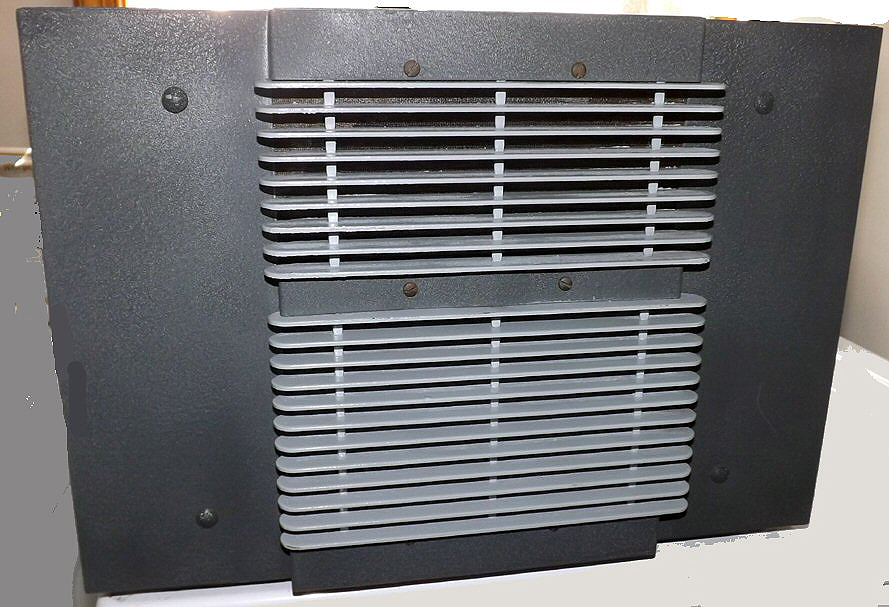

The R-42 Reproducer was designed as the companion to the post WW-II SX-42 receiver.
This speaker was marketed as a High Fidelity reproducer with Bass Reflex design features. The SX-42 touted a high fidelity audio system utilizing push-pull 6V6 audio output tubes. The concept of high fidelity sound reproduction was new to the post-war era, and the R-42 included not only a totally enclosed and insulated baffle cabinet, but also a 12" extended range PM speaker with an extremely large magnet.





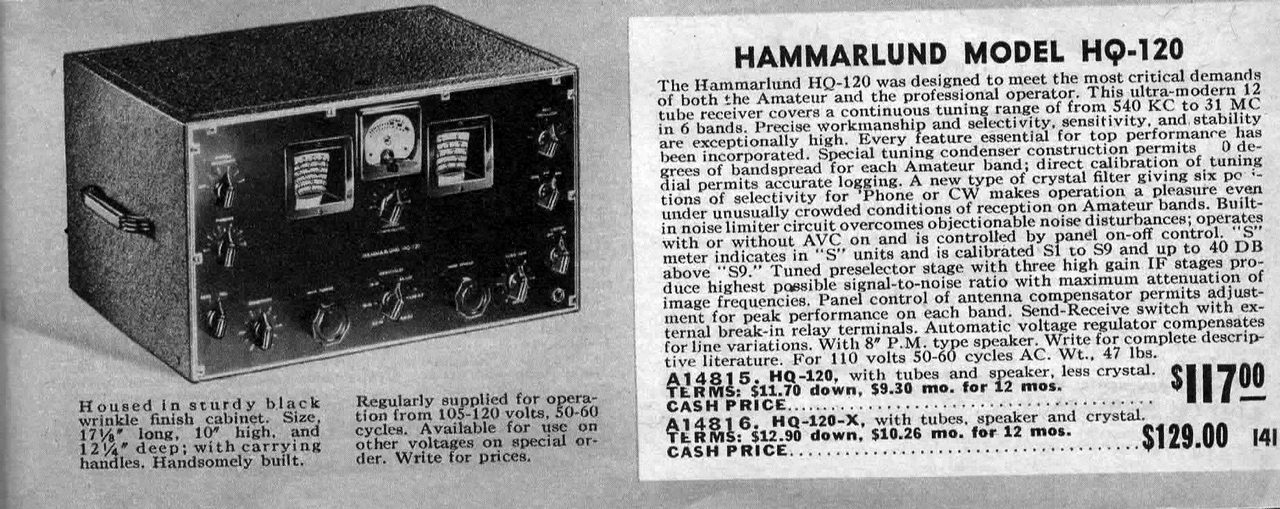
A manufacturer's service manual is available on the above receiver. Click image above to open PDF file.
The Hammarlund HQ-1290X was a popular ham and communications receiver when it was introduced in late 1945. After a long search, the museum is proud to have this excellent example of a Post War HQ-129X in our collection. The HQ-129X was an improved version of the company's HQ-120X, which was a popular pre-World War II product. The new HQ-129X boasted several improvements over the previous set when it first appeared in an ad in the November, 1945 edition of Radio News Magazine. That ad appears below.


(Manufacturer's manual or additional technical information is available on this item. Click image above to access.)


The museum recently acquired this classic 1949 Harvey-Wells "Bandmaster" transmitter. It has undergone full restoration in our shops and is now on display in our ham and short wave communications gallery. This transmitter was very popular with ham radio operators in the early years after WW-II because of it's phone/cw features and reasonable price tag. Improvements were made to the "Bandmaster" in the post-war years, and model numbers, ranging from "A" through "D" indicate into which generation the set falls.
Harvey-Wells produced economical transceivers and transmitters for amateur and commercial use. Some of their most popular offerings were the "Bandmaster" transceivers of the late forties. The company was founded as "Harvey Radio Labs" by Clifford A. Harvey in 1933. Shortly thereafter, Dick Mahler joined the Company.
The "Harvey Radio Labs" produced HF, VHF and UHF transceivers and transmitters as a low budget concurrent to Collins Radio Corp. Their equipment has been used by hams and commercial enterprises.
In 1940 John Wells joined the company, the name was changed to "Harvey - Wells Electronics Company" in march 1940. They produced equipment used for police communication, civil defense and the Navy.
After the war, within a range of ham band transceivers, Harvey - Wells produced the TBS-50 "Bandmaster". The company didn't make the step to single sideband transmitting technique and numbers of sets sold dropped.
In 1957, the company was acquired by "Within Machine Works." The "Harvey Radio Labs" company still existed and became owner of broadcasting stations.
(Manufacturer's manual or additional technical information is available on this item. Click image above to access.)
Below are two views of the inside of the TBS50D



Heathkit's first ad for a product appeared in March of 1948 when they introduced the Model K-1 which is a receiver shown below. Heathkit soon became the "go-to" supplier for many hobbyist and ham radio customers, which continued over the life of the company. Originally a strictly mail order operation, the company eventually opened franchised stores in many locations around the country. Their product line included ham radio products, audio equipment, test instruments, computers, color televisions and electronic organs, all in kit form. Having undergone later mergers with first Daystrom and then Zenith, and facing competition from over-seas manufacturers and an ever increasing difficulty in product construction due to advancing technology, the company ended retail sales in 1992.


The general consensus at the time is that the K-1 was intended to be HeathKit's competitive offering against Allied Radio's popular Knight-Kit "Ocean Hopper" receiver, which had been around since the late 1930s, and which was substantially upgraded and heavily marketed after the war ended. Unlike the "Ocean Hopper," which was a "hot chassis" set that supported headphone listening only, the K-1 featured a safe AC transformer type power supply, and offered an optional 2-1/2" speaker for an additional $1.95.

The Heathkit DX-20 50 watt CW transmitter was designed around a final amplifier tube originally intended for service as a horizontal sweep amplifier in television receivers. The relatively low price and easy assembly of the DX-20 made it a popular CW transmitter in its day for newly licensed "Novice" class hams on a budget. The photo below shows the museum's DX-20 powering a 100 watt dummy load lamp.
(Manufacturer's manual or additional technical information is available on this item. Click image above to access.)
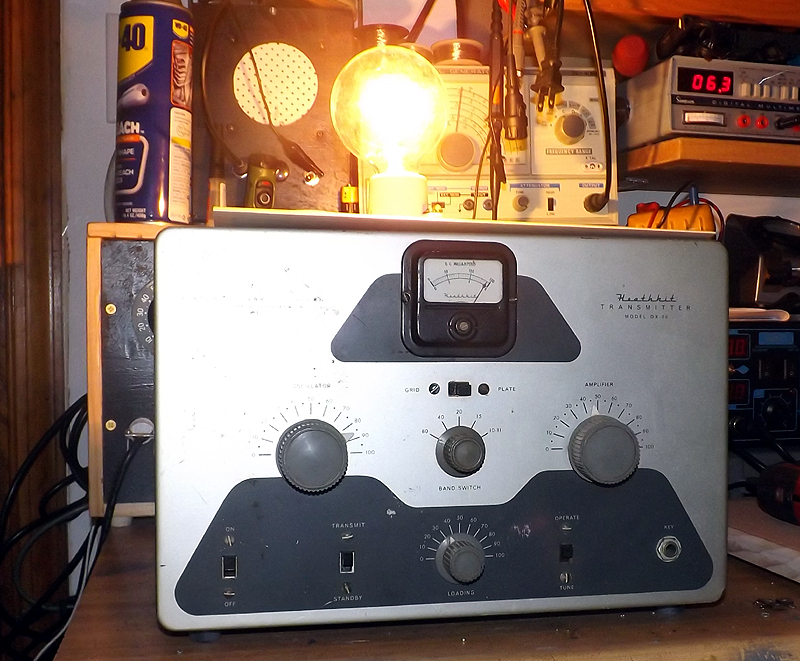
Heathkit DX-100B 120 Watt phone and CW transmitter from the late 1950s
The Heathkit DX-100 was probably one of the finest pieces of ham radio gear that the company offered. A few of these transmitters can still be found in service seventy years after they were first introduced. Conservatively rated at 120 watts phone/cw, and boasting full plate modulation of the dual 6146 final amplifier, it out performed the Knight-Kit T-150 and other screen grid modulated rigs having 6146 finals.
(Manufacturer's manual or additional technical information is available on this item. Click image above to access.)



Grid dip meters were used to determine resonance of coils and tuned circuits prior to the introduction of computerized test equipment.
(Manufacturer's manual or additional technical information is available on this item. Click image above to access.)

One of the last generation of Heathkit "Ham" radio products was this late 1970s HW-99 CW only transceiver.
While Heathkit enjoyed a stellar reputation for their post-war through 1960s product offerings, the mid to late 1970s saw a sharp drop-off in the quality of their equipment. In an attempt to keep up with modern and more complex digital transmitters and receivers for the Ham market, shortcomings were found in their later designs such as the frequency instability for which HW-99 was notorious, and many kits had became complex to the point where average customers could not successfully assemble them. . In addition, the company undertook an ambitious plan to open local sales and service stores for their products in the 1970s, as a way to boost their slumping mail order sales. Many believe that this huge undertaking contributed to their demise. By the late 1970s, most customers knew that the company's days were numbered, and the influx of already assembled and tested amateur radio equipment from Japan and the Far East, eventually sealed the fate of the Benton Harbor, Michigan based electronics pioneer.
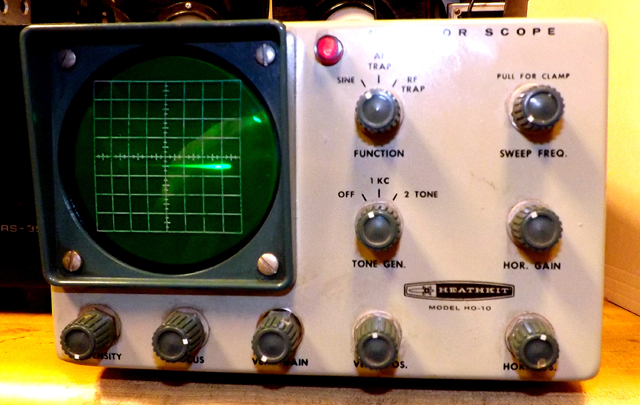

RADIO COMPANY OF CHICAGO, IL.
The Howard Model 437-A multi-band receiver was another inexpensive communications radio from the 1930s. There is some obvious similarity between the case style of this radio and some of the earlier Hallicrafters and Echophone sets. This had to do with the connections between Hallicrafters, Echophone and Howard in the years when Hallicrafters did not possess an RCA license for manufacturing their products. Popular belief is that Howard may have made some of the radios sold under the Hallicrafters and Echophone names in the early Depression years.
Howard Radio continued in business through and after World War -II. The company failed to make the transition to the miniature tube and transistor era and they faded from the scene by 1949. (Click image above for service information)
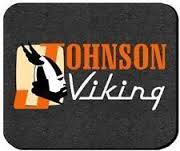





Allied Radio and Heathkit developed a unique step-by-step assembly procedure for building their products in kit form. To see an example of the assembly manual from a Knight-Kit Span Master radio, click the icon below.
(Manufacturer's manual or additional technical information is available on this item. Click image above to access.)

The Knight-Kit R-100 receiver
With increased interest in amateur radio by a generation of post WW-II baby boomers who were now coming of age, 1957 proved an opportunity for Allied Radio to address mounting competition from Heathkit, Hallicrafters, and other manufacturers of serious amateur radio equipment. Previously, most of Allied's Knight-Kit short wave receiver offerings were limited to basic regenerative type "experimenter" kits such as the popular "Ocean Hopper" and "Space Spanner." With the introduction of the R-100 receiver, Allied launched into the production of serious short wave and ham radio equipment that was intended to compete directly with Heathkit. This progression of higher end receiver and transmitter kits continued through the 1960s.
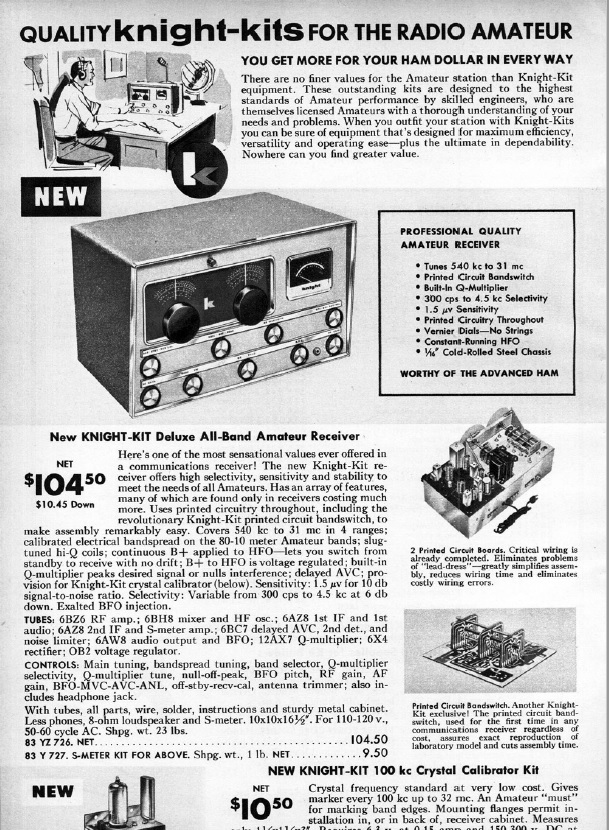
See the complete assembly and instruction manual for the Knight T-50 by clicking the photo above
The Knight-Kit T-60 60 watt AM/CW transmitter
(Manufacturer's manual or additional technical information is available on this item. Click image above to access.)
After several years of sales of the popular T-50, Allied needed a small AM -CW transmitter to compete with Heathkit's disappointing DX-40 and then the more popular DX-60 transmitters. The Knight T-60 was a sleek screen grid modulated AM rig which used a 6DQ6, originally developed for use as a TV horizontal sweep amplifier, as it's final amp. As seen in a photo on the home page of the communications collection, The Knight T-60 was the transmitter used by Mr. DeMajo at the original K5HTZ station in New Orleans during the early 1960s.
Allied Radio's last major entry into the Ham market was this T-150 transmitter. Obviously designed to compete with the popular Heathkit DX-100, the T-150 also featured built-in VFO frequency control and a 150 watt final amplifier employing two 6146 tubes. Unlike the DX-100, however, the T-150 used screen grid modulation instead of more expensive plate modulation that was standard on the Heathkit transmitter, and there were inherent design problems with the built-in VFO, which was known to cause spurious signals..
While the company continued to offer the matching receiver and several other ham kits as late as the 1970 model year, at which time the company was sold to TANDY Corporation, The T-150's run was short-lived, and it was last offered in Allied's 1965 general catalog.

(Manual available, click photo)

National SW-3 was a popular basic and affordable 3 tube communications receiver first introduced in the mid 1920s.
With their popularity and simple performance for that era, the SW series receivers were dubbed "Thrill Box" radios.
(Manufacturer's manual or additional technical information is available on this item. Click image above to access.)

The $17.70 price tag from 1930 would equate to approximately $275.00 in 2020 dollar value.
National HRO Communications Receiver with Type "G" Coil Assembly and matching speaker.
The HRO dial was a device patented by National Corporation. See a copy of the patent application here- 
(Manufacturer's manual or additional technical information is available on this item. Click image above to access.)
The early HRO receivers required additional "plug-in" coil assemblies for band changing. Pictured is a set of HRO coils, in their factory supplied rack holders, intended for use with the receiver above.

Above: 1948 National NC-240DT communications receiver with speaker.
Below: 1941 National NC-44 receiver.
(Manufacturer's manual or additional technical information is available on this item. Click image above to access.)
See ad below from 1941 Amateur Radio Handbook covering these two receivers.


(Manufacturer's manual or additional technical information is available on this item. Click image above to access.)
The National SW-54 was a basic SWL (short wave listener's) receiver built with the look and feel of National's higher end "Ham" and commercial communications grade receivers.
(Manufacturer's manual or additional technical information is available on this item. Click image above to access.)

This RME 152A "Frequency Expander" was a recent gift to the Museum Of Yesterday from Ham operator Jim Lewis, W8MGZ RME was a company based in Peoria, IL that manufactured communications equipment. This unit permitted reception of VHF bands on a standard short wave receiver. (click image to view for manual)


This 1939 vintage 20 Watt CW transmitter, manufactured by the Thordarson Transformer Company, utilizes a 6L6-G as the RF oscillator/RF output tube, along with a Type 80 full-wave rectifier. Following full restoration, the unit was recently placed on the air for a demonstration, and it still kicks out a mean little signal for it's size.
![]()
Click the icon above to view the original 1940 manufacturer's catalog cut for this product


FROM OUR COLLECTION
 |
The art and science of Ham radio was an outgrowth of interest in the new field of electrical engineering. While scientists and researchers were discovering new applications for electricity in those early years of the 20th Century, many amateur experimenters were following the same path in their own garages and basements. Many of the advancements made in radio, throughout the years, were the result of discoveries made by amateur scientists and experimenters. For the first half of the century, a great deal of ham radio equipment had to be built by the amateurs themselves. Books from that era featured construction articles, diagrams, and workshop practice suggestions mainly aimed at amateur operators who wanted or needed to build their own radios. This section of the site is set aside for the display of home-made radios and equipment which have found their way into the collection of the Museum Of Yesterday. |
 |
In 1935, a group called "The Editors Of Radio" began publication of an annual book of their assembled notes and projects of interest to radio experimenters and amateur radio operators. The publication, entitled "Radio Handbook" was more than likely intended to compete with the ARRL's popular "Radio Amateur's Handbook" which followed the identical basic format. By the time of the release of the Seventh Edition in 1940, the Radio Handbook had become a well accepted guide for experimenters and engineers alike. |
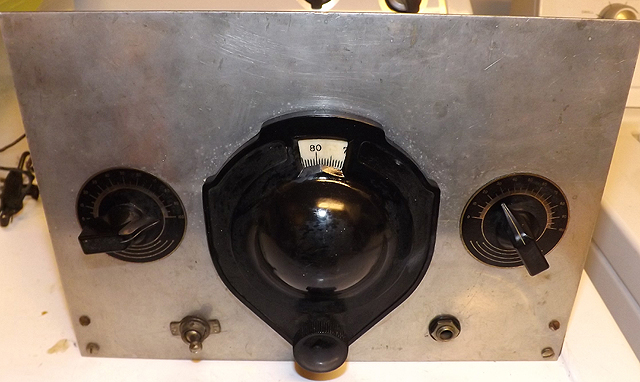

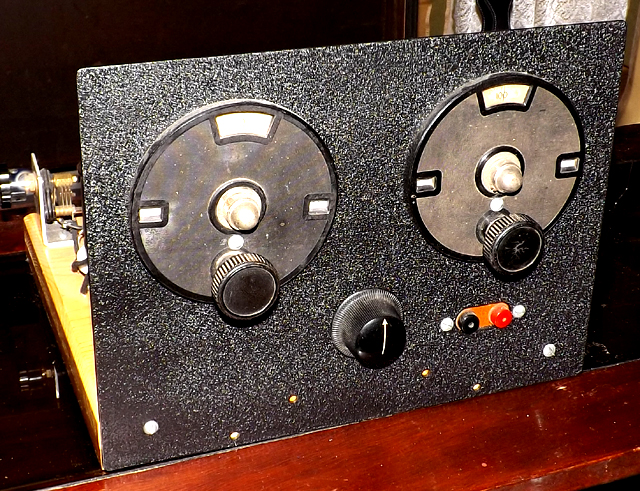



A homebrew 6L6 novice transmitter from the 1950s. The bottom deck of this rig is typical of many "first rigs" that young hams on a budget built from recycled radio and TV parts in order to get on the air after receiving their Novice ticket. The television set power transformer and 5U4GB rectifier tube were likely provided, as an incentive to the young ham who assembled this rig, courtesy of the old set scrap heap at a neighborhood "mom 'n pop" radio and tv repair shop. On the lower deck, the device behind the 6L6 is actually a WW-II military radio crystal in a hermetically sealed 8 pin container that resembles an octal metal tube. The top deck was probably added in order to turn the formerly CW only transmitter into an AM/CW rig. Many novices who couldn't afford new equipment, either built AM modulators for their CW rigs, or used modified Hi-Fi amplifiers as modulators when they upgraded to General.
One manufacturer, Eico, offered a factory built modulator that was essentially a Push-Pull Hi-Fi amplifier with a modulation transformer in place of a standard output transformer. It was intended as an accessory for their novice transmitter, and could also be used with the Heathkit AT-1, DX-20, or the Knight-Kit T-50, which were all entry level CW only transmitters.


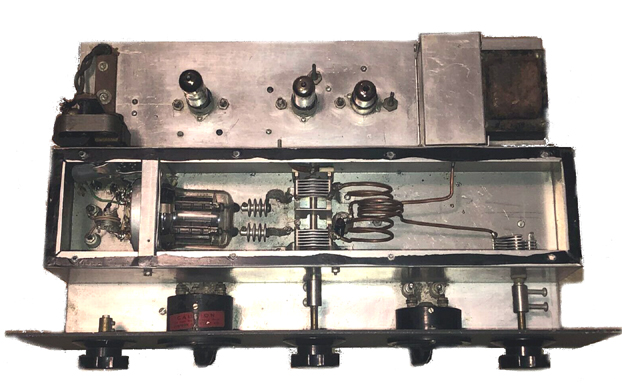
Shown above: An early 1950s VHF transmitter.
While amateur radio experimenters had become interested in VHF and UHF frequency operations prior to WW-II, it was actually wartime developments, mainly in the realm of RADAR, that perfected the tubes and hardware needed to successfully operate in the VHF and UHF spectrum. By the early 1950s, ham operators were successfully harnessing the 6 and 2 meter bands for short-range AM communications. Not long after, it was found that FM was superior in these regions, and that opened the door to repeater and portable devices that are still being expanded and refined upon with today's available technology. Pictured above is a typical VHF transmitter from the early 1950s. Tubes which were still somewhat strange to amateur radio, such as the 829 shown in the final amplifier cavity above, became the new tools for operators who wanted to venture into this new territory.
THE STORY OF THE "BIG RIG"
 |
Back in the days long before the era of foreign manufactured all-band desktop transceivers, every ham dreamed of owning that monster transmitter that could dim the streetlights while radiating enough RF to talk to anyone, anywhere. In the Depression and pre-war years, manufactured transmitters were scarce and expensive, so many Hams built their own transmitters. Radio publications from that era contained a full variety of amateur radio projects that ranged from simple one-tube receivers to mega transmitters that rivaled commercial radio broadcast station equipment. A Ham's success in assembling such equipment, was testimonial to both the mechanical and electrical proficiency of the builder. |
Some time ago, the museum came into possession of a large collection of ARRL and other ham radio publications from the era of 1929 through 1960. We decided to see what a pre-WW-II Ham would have experienced in trying to build a large transmitter from the period of about 1938. The Radio Handbook of that year featured a phone / CW transmitter, conservatively rated at 250 watts, that seemed appropriate for the project. After combing the surplus markets at hamfests and on EBAY, for eighty-year-old parts that were still functioning, we were able to assemble such a transmitter using authentic 1938 vintage parts and construction practices. The following section documents this project with photos and diagrams of that transmitter which now resides in the museum's collection. |
|



RF SECTION CHASSIS SCHEMATIC
In the late 1930s, the Depression was easing and many serious ham operators were able to purchase commercially built receivers. Transmitters, however, were less plentiful and considerably more expensive. In that era, many hams typically built their own transmitters using laboratory tested designs that were featured in ARRL handbooks and other ham publications. This "pristine" rack mounted 250 Watt CW transmitter-exciter, utilizing a 6A8 oscillator tube, along with a 6L6 buffer and dual 811 finals, was an example of a professional quality well constructed rig from that pre-World War II era.. Below is a rear chassis photo showing the internal construction of the RF unit.




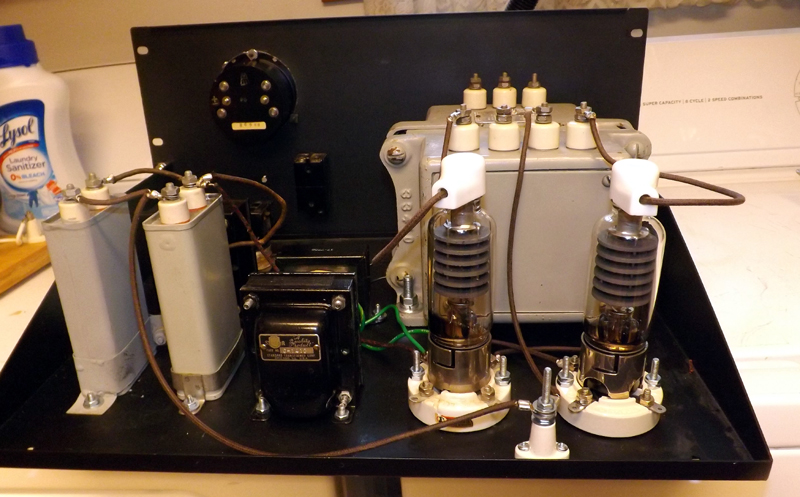
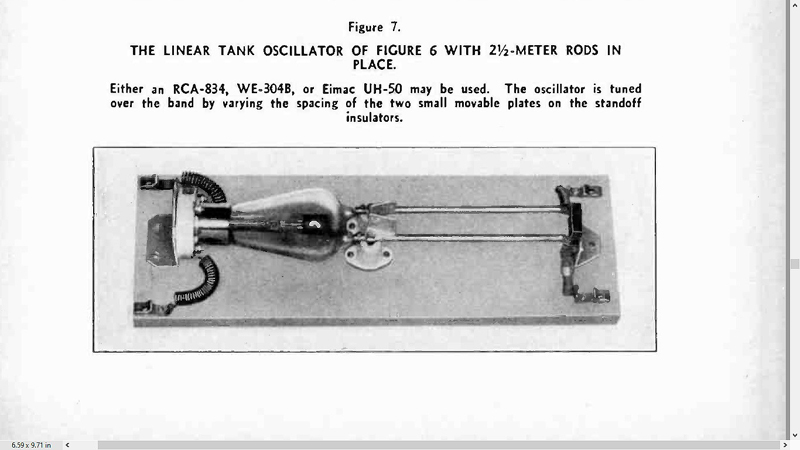

A working model of the oscillator, described in the 1938 Radio Handbook, is on display at the museum.










